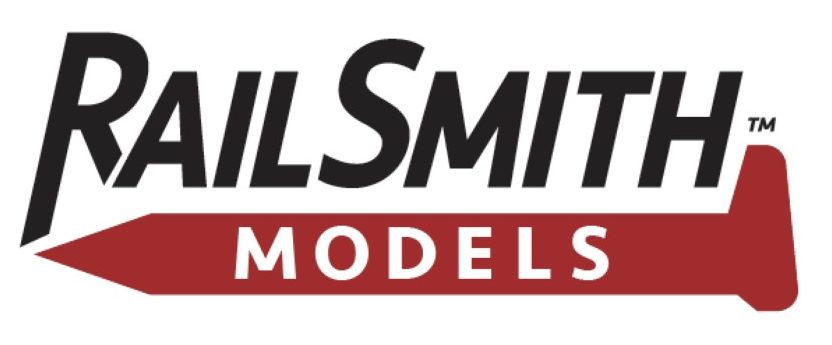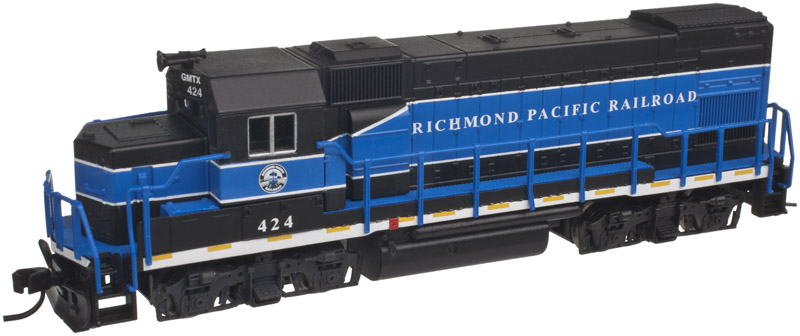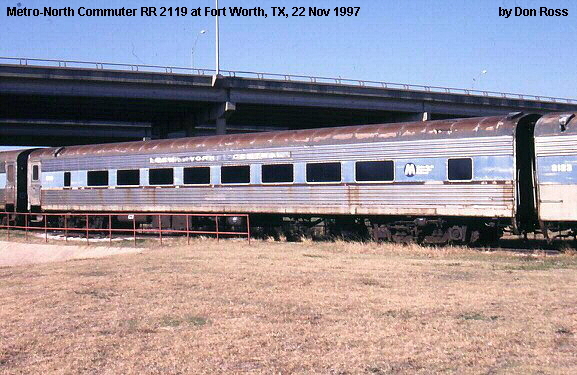Specific Item Information: Florida East Coast, Atlantic Coast Line and the Central of Georgia all contributed coaches to the City of Miami. All are built by Pullman-Standard and were decorated in the chocolate and orange scheme with ‘City of Miami’ in the lettering board. The car owner initials were in black centered above the truck by the door. All three of these coaches were sold to Amtrak in 1971.
The Illinois Central insisted that cars in their train from other owners were painted in this scheme known as the ‘Panama’ scheme. Besides the ACL, FEC and CoGa, other lines that had cars painted in this scheme were: CNW, NYC, NP, PRR, UP and DL&W. But these were usually cars leased for the busy winter season. All were painted in the chocolate and orange, with rare exception.
The City of Miami was an all streamline consist early on. Something that was a cut above the competition, (Penny’s Southwind). There are three road numbers being produced at this time. This selection ‘City of Miami Coach Fleet 1’ is for all three coaches in this release. Atlantic Coast Line #247, Central of Georgia #663 and Florida East Coast ‘Canal Point’.
The Illinois Central insisted that cars in their train from other owners were painted in this scheme known as the ‘Panama’ scheme. Besides the ACL, FEC and CoGa, other lines that had cars painted in this scheme were: CNW, NYC, NP, PRR, UP and DL&W. But these were usually cars leased for the busy winter season. All were painted in the chocolate and orange, with rare exception.
The City of Miami was an all streamline consist early on. Something that was a cut above the competition, (Penny’s Southwind). There are three road numbers being produced at this time. This selection ‘City of Miami Coach Fleet 1’ is for all three coaches in this release. Atlantic Coast Line #247, Central of Georgia #663 and Florida East Coast ‘Canal Point’.
Model Information: First released in 2009.
- All-New Tooling based on PS Plan #7484
- Prototype Specific Details: With or without Skirts, Corrugated or Smooth Sides as appropriate
- Working diaphragms
- Blackened Metal Wheelsets on correct GSC 41-N style Trucks
- Come with decals permitting multiple car number and names
- Drop-In Lighting Kit will also be available, item #933-1099
Prototype History: With big plans for its post-war streamliner fleet, the New York Central placed an order for 153 coaches with Pullman-Standard in May 1944. Deliveries of the cars (plan #7484) began in February and continued through October of 1946. At the time, this was the largest equipment order delivered within a single year. Although intended for general service, the cars were delivered with fluted sides that would allow them to be used with Budd cars. On delivery, these were truly state-of-the-art coaches, complete with air conditioning, deep reclining seats, individual lighting, large windows, full-width diaphragms and more. These cars led long lives and were later converted for commuter service. Others were acquired by Amtrak(R) in 1971 and continued in service for several years. A few survive today.
The 64 Seat coach from Pullman was designed as a short-haul commuter coach. The cars were built in the late 1940s using lightweight construction technology which significantly reduced their weight when compared to the older pre-war heavyweight cars. This Pullman design featured smooth sides and was purchased in large numbers by the Pennsylvania and New York Central railroads as well as many other roads.
The 64 Seat coach from Pullman was designed as a short-haul commuter coach. The cars were built in the late 1940s using lightweight construction technology which significantly reduced their weight when compared to the older pre-war heavyweight cars. This Pullman design featured smooth sides and was purchased in large numbers by the Pennsylvania and New York Central railroads as well as many other roads.
Road Name History: The Illinois Central Railroad (reporting mark IC), sometimes called the Main Line of Mid-America, was a railroad in the central United States, with its primary routes connecting Chicago, Illinois, with New Orleans, Louisiana, and Mobile, Alabama. A line also connected Chicago with Sioux City, Iowa (1870). There was a significant branch to Omaha, Nebraska (1899), west of Fort Dodge, Iowa, and another branch reaching Sioux Falls, South Dakota (1877), starting from Cherokee, Iowa. The Sioux Falls branch has been abandoned in its entirety.
The IC is one of the early Class I railroads in the US. Its roots go back to abortive attempts by the Illinois General Assembly to charter a railroad linking the northern and southern parts of the state of Illinois. In 1850 U.S. President Millard Fillmore signed a land grant for the construction of the railroad, making the Illinois Central the first land-grant railroad in the United States.
The Illinois Central was chartered by the Illinois General Assembly on February 10, 1851. Senator Stephen Douglas and later President Abraham Lincoln were both Illinois Central men who lobbied for it. Douglas owned land near the terminal in Chicago. Lincoln was a lawyer for the railroad. Upon its completion in 1856 the IC was the longest railroad in the world. Its main line went from Cairo, Illinois, at the southern tip of the state, to Galena, in the northwest corner. A branch line went from Centralia, (named for the railroad) to the rapidly growing city of Chicago. In Chicago its tracks were laid along the shore of Lake Michigan and on an offshore causeway downtown, but land-filling and natural deposition have moved the present-day shore to the east.
In 1867 the Illinois Central extended its track into Iowa, and during the 1870s and 1880s the IC acquired and expanded railroads in the southern United States. IC lines crisscrossed the state of Mississippi and went as far as New Orleans, Louisiana, to the south and Louisville, Kentucky, in the east. In the 1880s, northern lines were built to Dodgeville, Wisconsin, Sioux Falls, South Dakota, and Omaha, Nebraska. Further expansion continued into the early twentieth century.
The Illinois Central, and the other "Harriman lines" owned by E.H. Harriman, was the target of the Illinois Central shopmen's strike of 1911. Although marked by violence and sabotage in the south, midwest, and western states, the strike was effectively over in a few months. The railroads simply hired replacements and withstood diminishing union pressure. The strike was eventually called off in 1915.
The IC is one of the early Class I railroads in the US. Its roots go back to abortive attempts by the Illinois General Assembly to charter a railroad linking the northern and southern parts of the state of Illinois. In 1850 U.S. President Millard Fillmore signed a land grant for the construction of the railroad, making the Illinois Central the first land-grant railroad in the United States.
The Illinois Central was chartered by the Illinois General Assembly on February 10, 1851. Senator Stephen Douglas and later President Abraham Lincoln were both Illinois Central men who lobbied for it. Douglas owned land near the terminal in Chicago. Lincoln was a lawyer for the railroad. Upon its completion in 1856 the IC was the longest railroad in the world. Its main line went from Cairo, Illinois, at the southern tip of the state, to Galena, in the northwest corner. A branch line went from Centralia, (named for the railroad) to the rapidly growing city of Chicago. In Chicago its tracks were laid along the shore of Lake Michigan and on an offshore causeway downtown, but land-filling and natural deposition have moved the present-day shore to the east.
In 1867 the Illinois Central extended its track into Iowa, and during the 1870s and 1880s the IC acquired and expanded railroads in the southern United States. IC lines crisscrossed the state of Mississippi and went as far as New Orleans, Louisiana, to the south and Louisville, Kentucky, in the east. In the 1880s, northern lines were built to Dodgeville, Wisconsin, Sioux Falls, South Dakota, and Omaha, Nebraska. Further expansion continued into the early twentieth century.
The Illinois Central, and the other "Harriman lines" owned by E.H. Harriman, was the target of the Illinois Central shopmen's strike of 1911. Although marked by violence and sabotage in the south, midwest, and western states, the strike was effectively over in a few months. The railroads simply hired replacements and withstood diminishing union pressure. The strike was eventually called off in 1915.
Brand/Importer Information: RailSmith is a brand launched by Lowell Smith in 2019. Lowell acquired the toolings from Walthers.
With each release, RailSmith will bring passenger cars from across the spectrum of North America’s railroads, with the goal of building entire trains over a period-of-time. It is our plan to release cars that might be for a specific train, but you can use these cars as you see fit, as did the railroads.
Production plans are grand, but we believe they are also achievable. We do not have the capabilities to release an entire train at once, but being able to focus on one release (two-or-three cars at a time), we can build a train over time.
With each release, RailSmith will bring passenger cars from across the spectrum of North America’s railroads, with the goal of building entire trains over a period-of-time. It is our plan to release cars that might be for a specific train, but you can use these cars as you see fit, as did the railroads.
Production plans are grand, but we believe they are also achievable. We do not have the capabilities to release an entire train at once, but being able to focus on one release (two-or-three cars at a time), we can build a train over time.
Item created by: CNW400 on 2024-05-03 23:28:48
If you see errors or missing data in this entry, please feel free to log in and edit it. Anyone with a Gmail account can log in instantly.
If you see errors or missing data in this entry, please feel free to log in and edit it. Anyone with a Gmail account can log in instantly.











